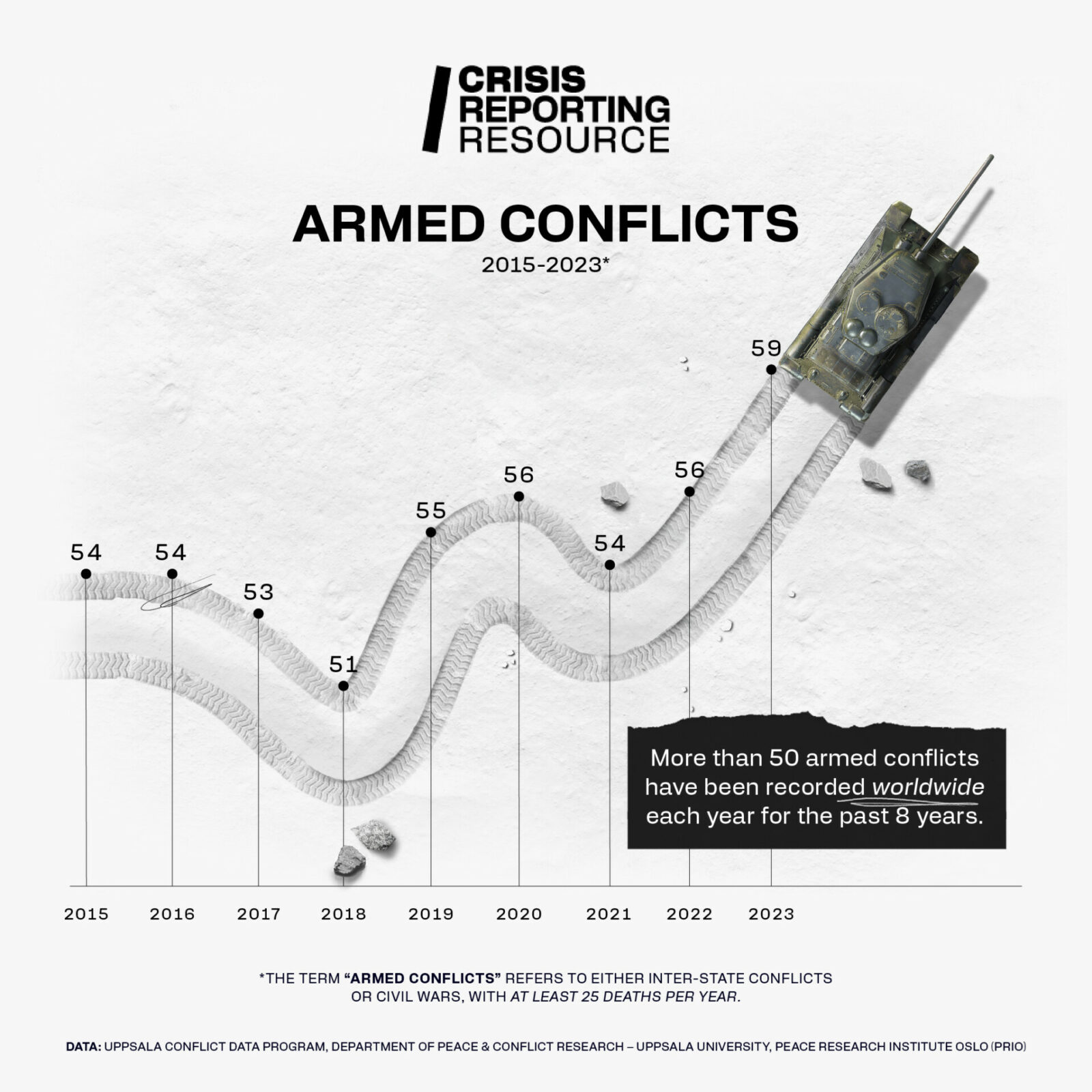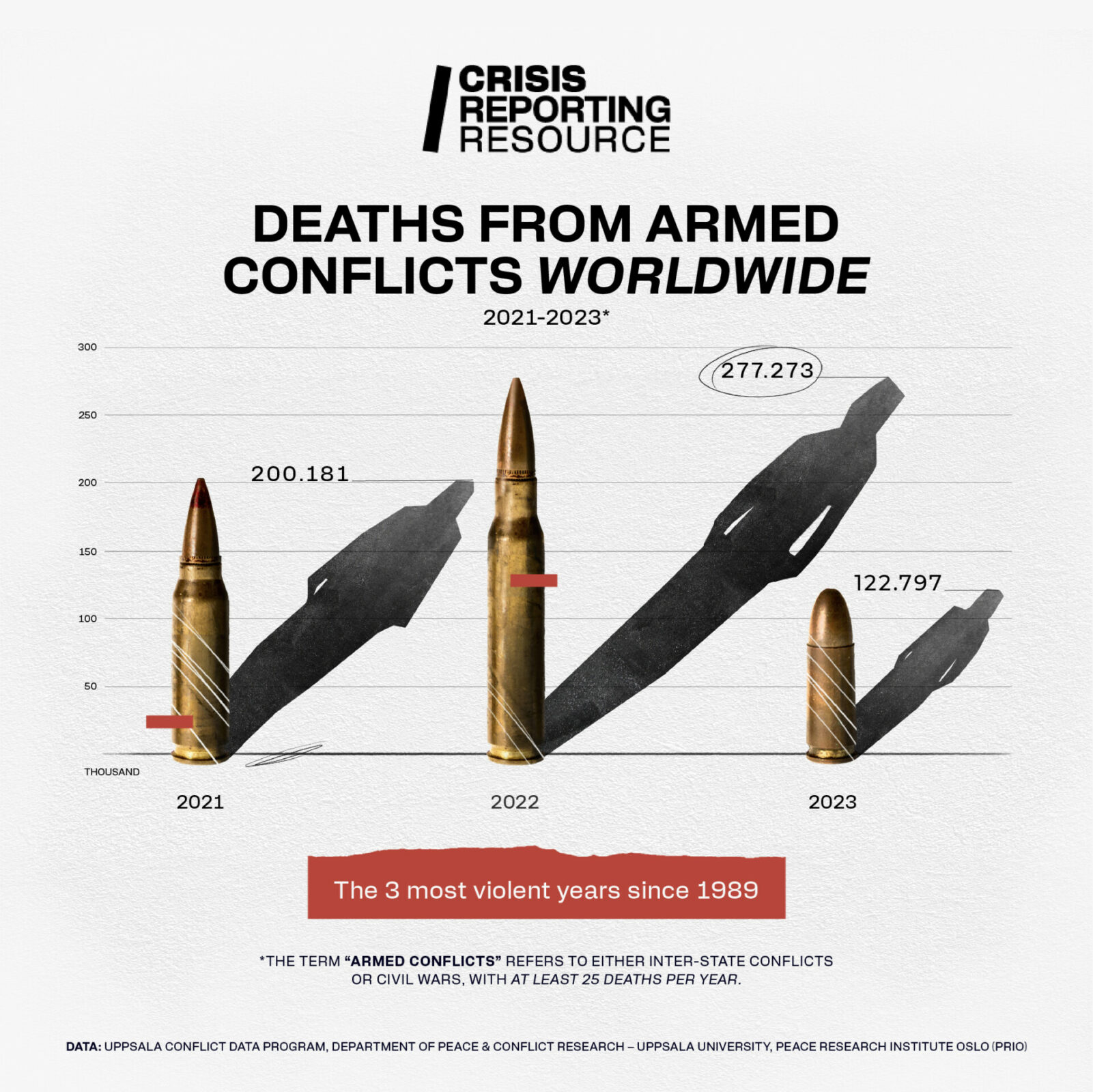The year 2023 saw 59 armed conflicts recorded worldwide, the highest number since 1946, according to a study by the Peace Research Institute Oslo (PRIO) using data from Uppsala University. These resulted in more than 120,000 deaths, making it one of the most violent years in recent history. iMEdD spoke with Siri Aas Rustad, Research Director at PRIO, about the statistics, trends and future of armed conflicts around the world.
Approximately 122,000 people died as a result of armed conflict in 2023. The wars in Ukraine and Gaza, which claimed 71,000 and 23,000 lives respectively last year, contributed significantly to this figure. Based on this data, 2023 ranks as the third most violent year since 1989, with 2022 and 2021 ranking first and second, respectively.
These are just some of the points highlighted in a report by the Peace Research Institute Oslo (PRIO), published in June 2024 and based on data from the Department of Peace and Conflict Research at Uppsala University. The Uppsala Conflict Data Program of the Swedish university has been running for over forty years and is one of the most reliable databases on armed conflicts around the world.
“When we say 59 conflicts, that is state-based conflicts, which means either international conflicts, so wars between two countries, or it could be civil wars,” Siri Aas Rustad, author of the report and research director at PRIO, tells iMEdD. The report states that more than 50 armed conflicts have occurred each year for the past eight years.

10 Crises of 2024 – Explained

From the autonomous, unrecognized state of Transnistria to the Sahara Desert and from regional conflicts such as Nagorno-Karbakh to the relations between the superpowers USA and China, iMEdD explained the crises that may concern us in 2024.
According to the Norwegian institute’s research, for 2023, the highest number of armed conflicts was observed in Africa, while the highest number of victims was observed in Europe and the Middle East.
Referring to the increase in casualties over the last three years, Rustad cautions that it is too early to tell whether this is a particular trend of the world becoming more violent or a mere coincidence. “In 2021, we had Ethiopia, we had American troops leaving Afghanistan, we had Yemen. In 2022, we had Ukraine and Ethiopia. In 2023, we had Gaza and Ukraine” she points out, adding that these three years witnessed something unique in recent history. “We have extremely violent conflicts, overlapping and coinciding, which creates this sort of peak.”

We may not be sure whether the conflicts will continue to become more deadly, but according to Rustad, we can see that they are becoming more complex.
The PRIO report notes that while the number of conflicts has increased over the past year, the number of countries in which these conflicts are taking place has decreased. Specifically, 59 conflicts were recorded in 34 countries, compared to 56 conflicts in 39 countries in 2022. According to the Institute’s researcher, this is because many of these countries have multiple active conflicts. In 2023, more than half of the countries with active conflicts had more than one armed conflict within their borders, while seven countries had three or more. “The way it works is that you can have several rebel groups or insurgent groups fighting against the government. So the government will be fighting several conflicts. Syria is a good example,” Rustad points out, adding that this situation makes the global conflict ecosystem much more complex.
